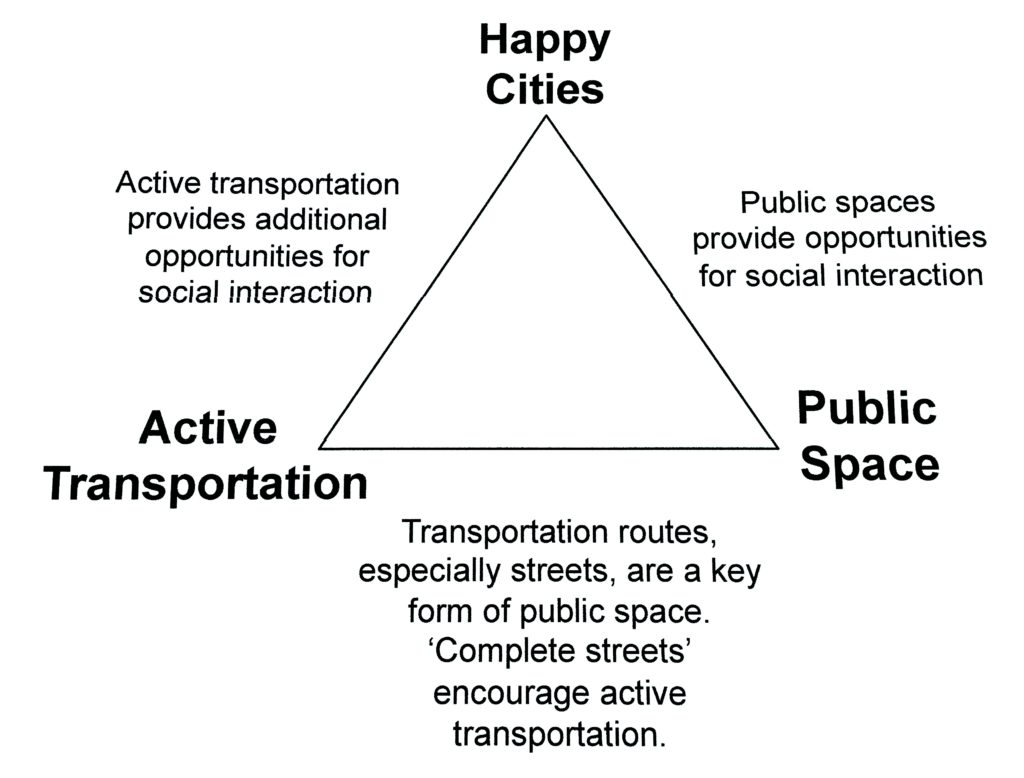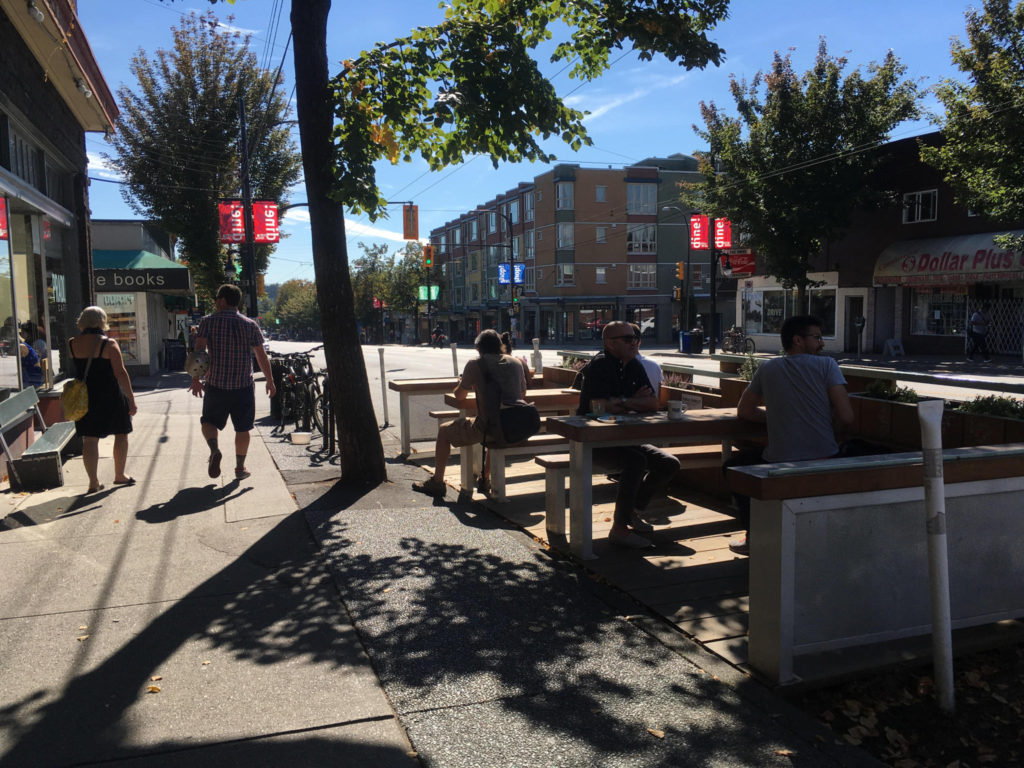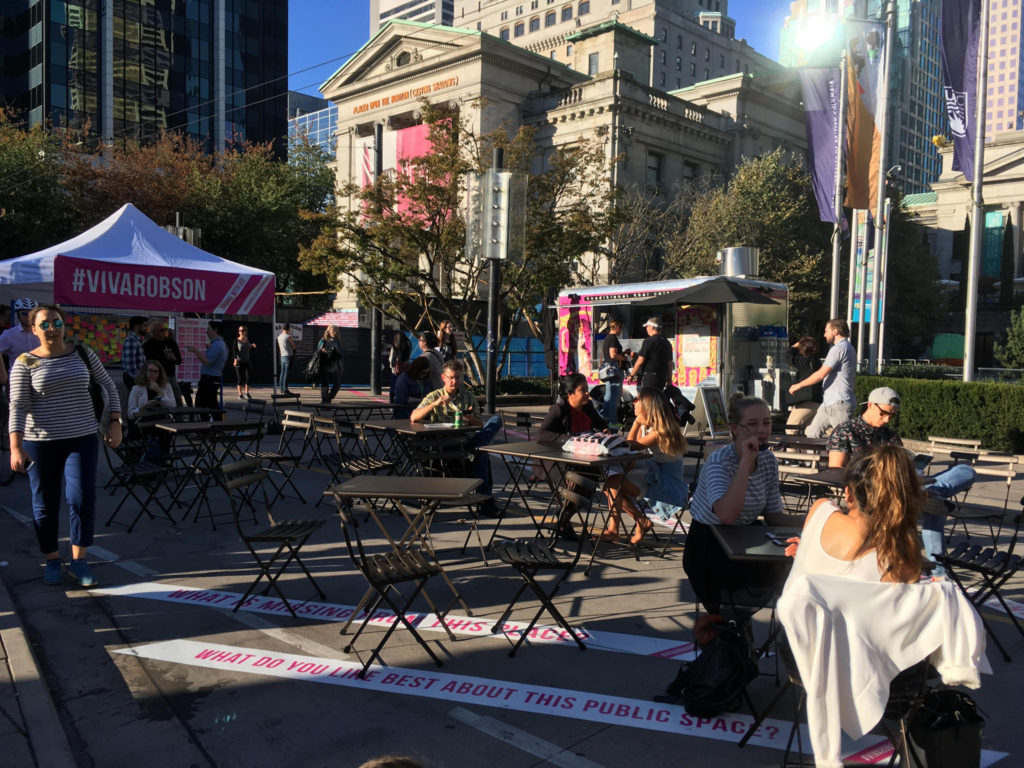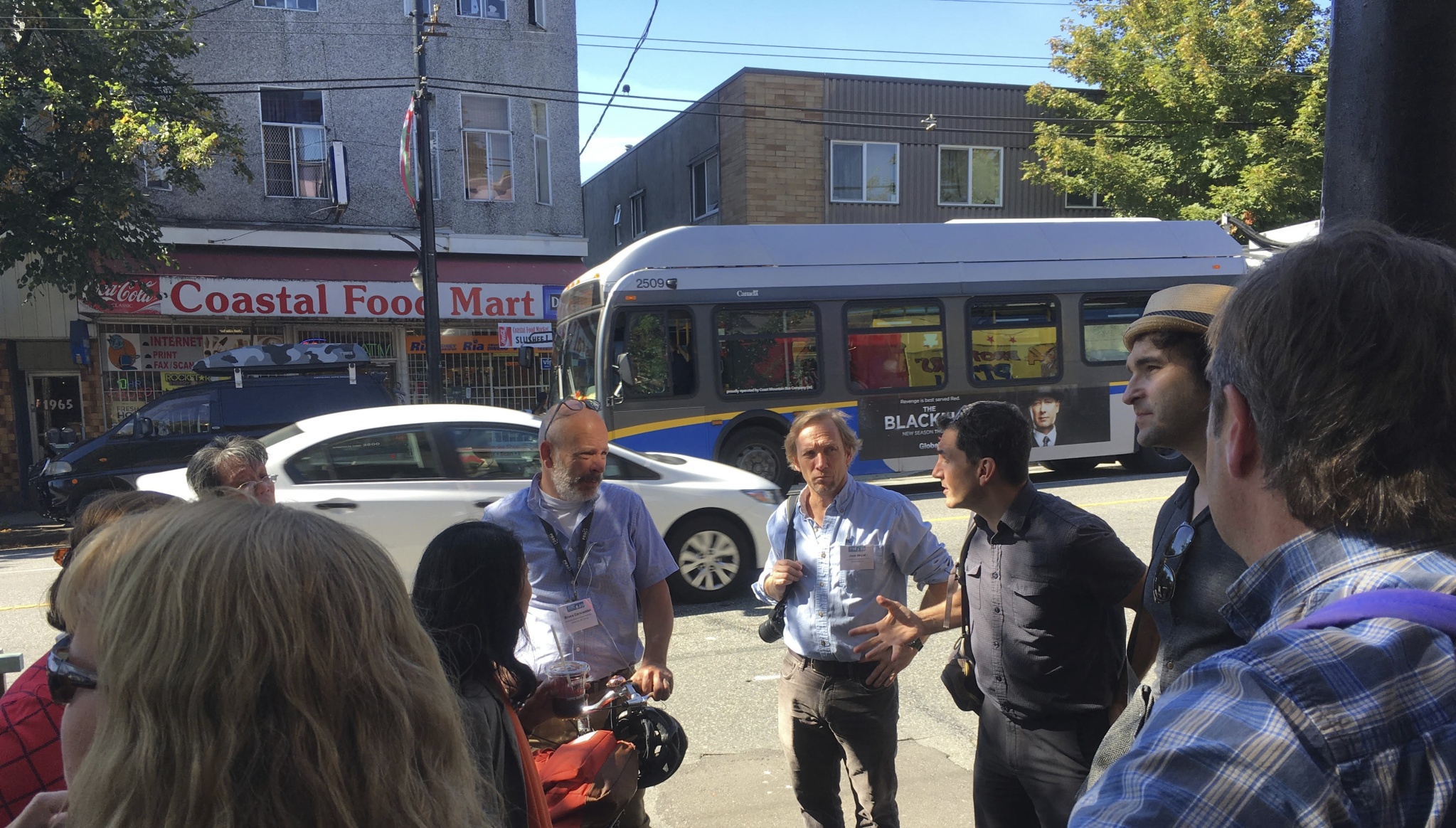Attracting over 1,500 city planners, transportation engineers, public health professionals, urban designers, policy makers, city officials and community leaders passionate about co-creating places with and for people, Placemaking Week is more of a festival than a conference.
Officially however, Placemaking Week comprises three overlapping component events (1) Pro Walk/ Pro Bike/ Pro Place, (2) the Placemaking Leadership Forum and (3) the Future of Places Summit. Each component offers a jam-packed schedule of presentations, poster displays, networking, mobile workshops and roundtable discussions.
Placemaking?
The term ‘placemaking’ has appeared sporadically in place branding literature for some time (e.g. Evans, 2015; Hemmingway, 2007). Still, the notion that effective place branding goes beyond logos, advertising or communications to encompass placemaking (i.e. comprehensive and collaborative approaches to place development) permeates Simon Anholt’s (2010) book Places: Identity, Image and Reputation (read the full review here).
In terms of practice, Caio Esteves’ place branding consultancy, PLUS Places for Us, takes a comprehensive approach that acknowledges place branding and placemaking intertwine. Some consultancies such as CoDesign and 226 Strategic also offer ‘placemaking’ alongside creative, design and brand development services. Others (e.g. Village Well) are dedicated to placemaking.
But what is placemaking?
According to the Project for Public Spaces (PPS), placemaking is a philosophy and a process dedicated to the community-driven co-creation of public space and more equitable, authentic, meaningful and sustainable place development overall.
Resonance with the continuing push for more resident-centered and participatory place brand management (see Zenker & Erfgen, 2014 for example) is readily apparent.
More specifically however, what could key mandates of the placemaking movement mean for place branding research and practice?
Three interrelated themes ran throughout the various forums and activities of my first Placemaking Week: (1) public space, (2) happy cities and (3) active transportation. These themes pose great opportunities for place branding.

1. Public space
Given PPS’s definition of placemaking, this first theme comes as no surprise. Still, the role of public space in placemaking, and perhaps place branding, requires further consideration.
The spaces that people share (i.e. public spaces) range from local markets to recreational facilities, laneways, parks and transit routes. According to the PPS however, streets are a pivotal public space that must be reconceptualised as a place for socialising and play not just trade and transportation in order to foster a sense of place.
Hence, if we want to talk about meaningful and authentic place brands, should we also be talking about public spaces, people-friendly streets in particular?
As I heard in a number of sessions, the importance of public space grows as access to private space declines, especially in regions such as Australia and America where the dream of owning large, single-family detached homes is becoming largely unachievable.
So, how can we make streets more people-friendly?
During a mobile workshop of Vancouver’s cherished Commercial Drive, I observed a popular parklet in situ. Although financed, insured and maintained by the café it faces onto, people can sit and enjoy the environment without purchasing from this café, or neighbouring businesses. The café is also not allowed to ‘brand’ the space. In this sense, the parklet passes as a public space.

Despite originating in San Francisco, parklets have become global phenomenon thanks to PARK(ing) Day. This annual event sees artists, designers and citizens transforming metered parking spots into public spaces for short periods of time (often one day), with the intention of highlighting issues around urban space.
Parklets could be considered a relatively small-scale public space that can infuse with the everyday movements of residents, and thus, a valuable alternative to larger public or community space ‘destinations’ (e.g. self-proclaimed ‘cultural precincts’, grandiose museums).
Placemaking Week encompassed many interactive, immersive and hands on mobile workshops. Participants cycled or walked around points of interest in the city including transportation hubs, innovative end-of-trip facilities and protected bike lanes under the direction of local and international experts. These four hour workshops provided great opportunities to ask questions as they arose. The ensuing discussion teased out the intricacies and challenges behind implementing the various initiatives and phenomena we observed.
For example, who pays the water bill for a community garden? How do you negotiate delivery truck access when you redesign a street to allow for a dedicated bike lane and safe walkways?
2. Happy cities
On the first major day of the Pro Walk/Pro Bike/Pro Place event, Charles Montgomery, author of the book Happy City: Transforming Our Lives Through Urban Design, spoke as part of a plenary on mobility.
Three key arguments underpin Montgomery’s book and the broader ‘happy city’ movement:
- Economic wealth does not necessarily make people (or cities) happier
- Social connectedness is central to happiness and overall human well-being
- Urban design can transform the lives of city residents (for better or worse), with major implications for degrees of social connectedness, and thus happiness
Singing to the same tune, the PPS advocates that cities fail and succeed at the scale of human interaction.
These ideas got me thinking: Place branding may have always been about more than ‘selling more stuff’, but how does the way we go about ‘branding’ places impact social connectedness? Can place branding initiatives encourage human interaction and social inclusion? Should we consider social connectedness and happiness place branding objectives?
Reinforcing the importance of lively public space to happy cities, Montgomery highlighted research demonstrating that superficial contact and fleeting interactions between people who don’t ‘know’ each other can enhance well-being. Active transportation helps too.
3. Active transportation
Active transportation refers to human-powered transportation (e.g. walking, cycling, wheelchair use, skateboarding). ‘Complete streets’ that are walkable, well-connected, accessible, easy to navigate, multi-use, ‘sittable’, welcoming, slow, safe and car-light encourage active transportation.
Indeed, the broader placemaking movement positions cars as the enemy, or at least a threat to lively public spaces that must be contained. Bruce Kratz, centennial scholar at the Brookings Institution, captured this sentiment well, describing freeways as the scars of the 20th century urban development paradigm.
How can place branding contribute to the development and maintenance of complete streets? Conversely, how do complete streets support place brands?

Overall, I walk away from Placemaking Week 2016 with more questions than answers. However, I am now even more convinced that placemaking and good (i.e. resident-centered, participatory) place branding intertwine in complex and evolving ways.
Although I do not recall once hearing the term ‘place branding’, place branding ideas were often implicit. For example, Kratz referred to both public spaces and complete streets as fundamental elements of a place’s value proposition. Arguably, happiness represents another key form of ‘value’, and therefore a central issue for place branding practitioners and researchers to consider moving forward.
 About the author
About the author
Amelia Green is a PhD Candidate at Griffith University, Queensland, Australia. Her current research focuses on city brand meaning and qualitative research methods. She is particularly interested in multidisciplinary approaches to place branding research and practice that embrace the multiple dimensions of places including culture, society, consumption, the arts, history, media and various forms of symbolism.
Amelia has published in the fields of city branding, green events, sustainability, fashion brand management and brand authenticity.
Connect with Amelia Green on LinkedIn


